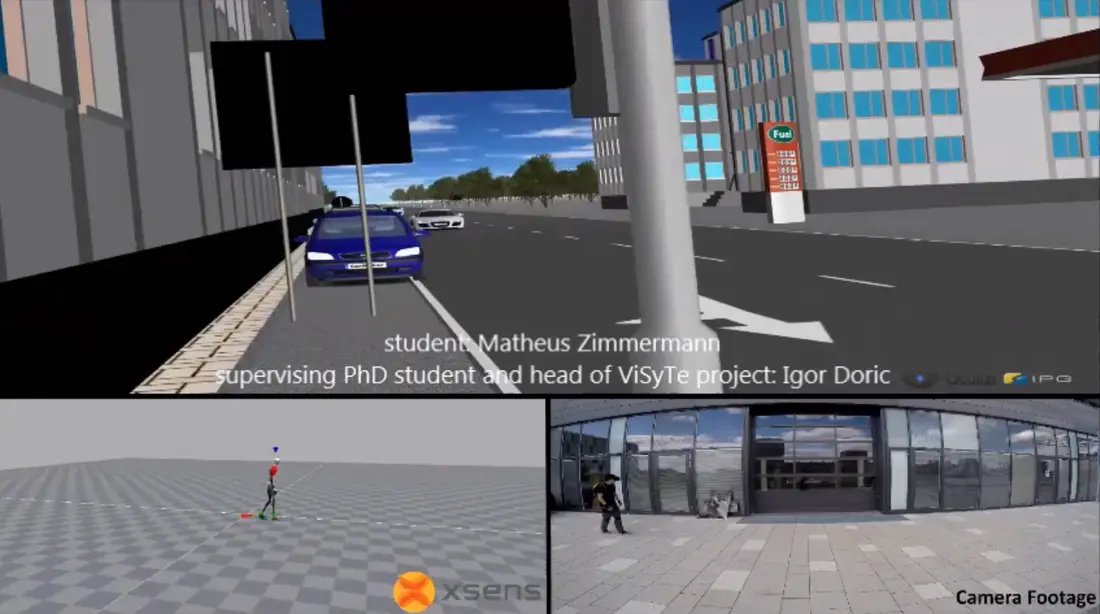How do pedestrians cross a busy street? How long do they wait for the right gap between two vehicles and when do they underestimate the risks? A doctoral student at CARISSMA research and test center is developing a completely new type of pedestrian simulator that allows test persons to immerse themselves as pedestrians in the virtual world and to study precisely this behavior in a safe environment. A Brazilian student of UFPR contributed to the development of the simulator with his thesis.
The main goal of the project is the development of a novel pedestrian simulator, which allows to study pedestrian behavior and risk acceptance of pedestrians in critical traffic scenarios in a virtual environment. For this purpose, a motion capture system was combined with a virtual vehicle dynamics simulation and virtual reality glasses, the so-called VR glasses, to create a system that allows test persons to immerse themselves as pedestrians in the virtual environment. The recorded motion data are subsequently evaluated and help to build up a deeper understanding of pedestrian behavior, especially in critical traffic situations, and to investigate pedestrian-vehicle interaction. Subsequently, the recorded data will be used for the test-driven development of new detection algorithms.

